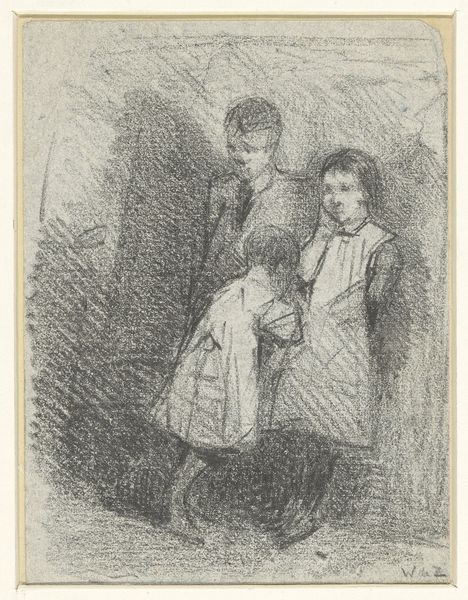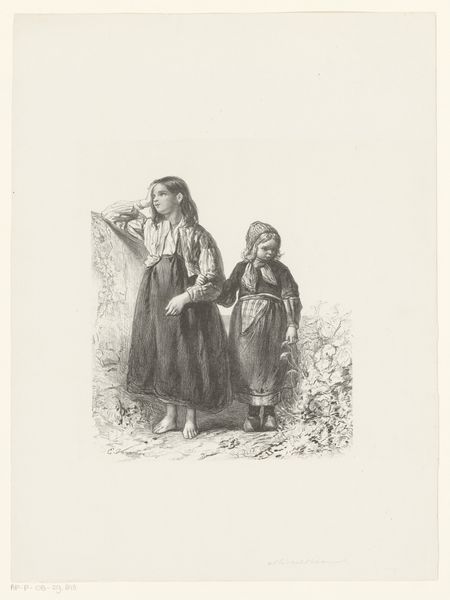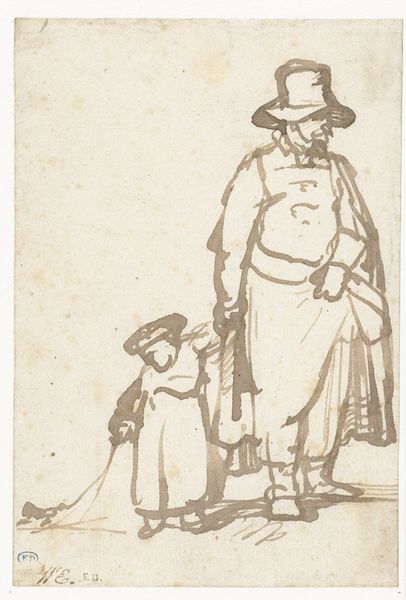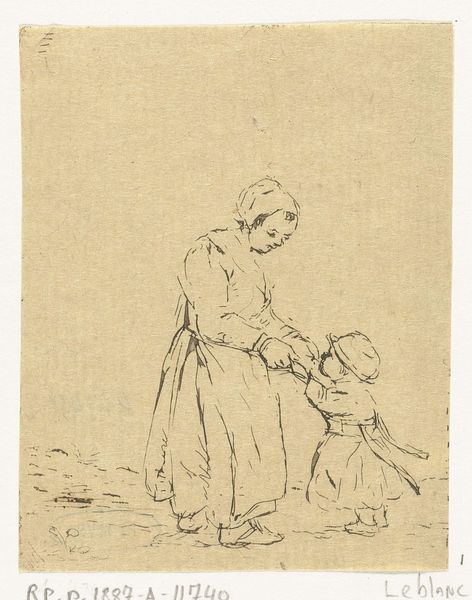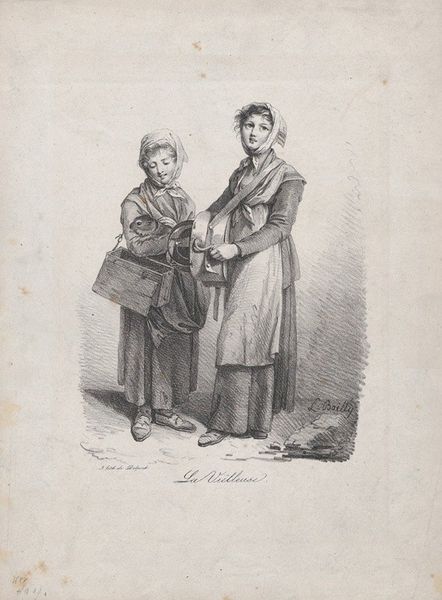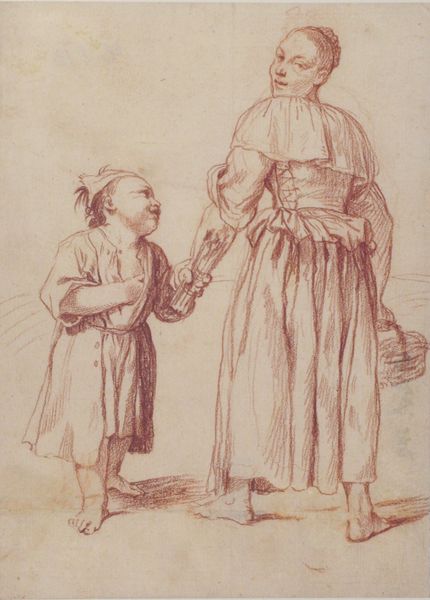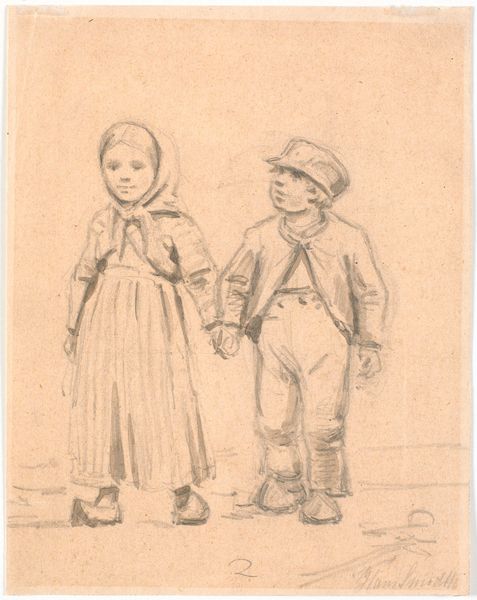
drawing, print, etching
#
portrait
#
drawing
#
still-life-photography
# print
#
impressionism
#
etching
#
figuration
#
line
#
genre-painting
#
realism
Dimensions: Sheet: 18 7/16 × 13 7/16 in. (46.9 × 34.2 cm) Plate: 12 1/8 × 8 5/8 in. (30.8 × 21.9 cm)
Copyright: Public Domain
Curator: Welcome. Before us is Marcellin Desboutin's 1872 etching, "Chanteurs des rues, grande pièce," now housed at The Metropolitan Museum of Art. Desboutin captured Parisian street life in its raw, unfiltered reality, and his work gives insight into the lives of marginalized populations in the 19th century. Editor: There's a somber mood that immediately hits you. The grayscale palette and rather quick lines convey a sense of poverty but there's also a powerful dignity present. The composition pushes the figures forward as though inviting us into their world, their performance. Curator: Exactly, Desboutin often portrayed figures outside of the Parisian salon—individuals existing on the margins. We see this through the style, choosing etching, a printmaking method suitable for capturing detail, yet inherently reproducible and, thus, challenging elitist notions of artistic production. The choice echoes the role of his subjects, echoing those laboring to live on the city streets. Editor: And speaking of labor, let's note the incredible rendering of their clothing. Notice how Desboutin utilizes varied line weights to suggest texture—the rough fabric of their clothes, their wear exposing the wear of the subjects’ livelihoods. It draws attention to their everyday material conditions. We must ask, where did these garments come from, how were they made, who labored to make them, and what would these garments signify to passersby on the streets of Paris? Curator: Well, the setting definitely plays a crucial role in our reading. Haussmann's urban planning was rapidly transforming Paris, creating new spaces, like the broad boulevards, where figures such as these street singers would perform and hopefully attract patrons. Editor: But beyond the immediate transaction of performance and pay, Desboutin's focus is on those processes of artmaking happening right on the street. Consider too how, unlike a painting locked away for a private collector, etchings circulated. They existed as commodities. The work here is, thus, highlighting the relationship between production, distribution, and consumption on multiple levels. Curator: I see that. And ultimately, it leaves us pondering not just the figures, but the very structures that determined their existence in 19th century Paris. Editor: Precisely. "Chanteurs des rues" presents a challenge for our own modes of looking. How might we move past a romanticized lens and, instead, fully see those rendered invisible or marginalized, past and present?
Comments
No comments
Be the first to comment and join the conversation on the ultimate creative platform.




